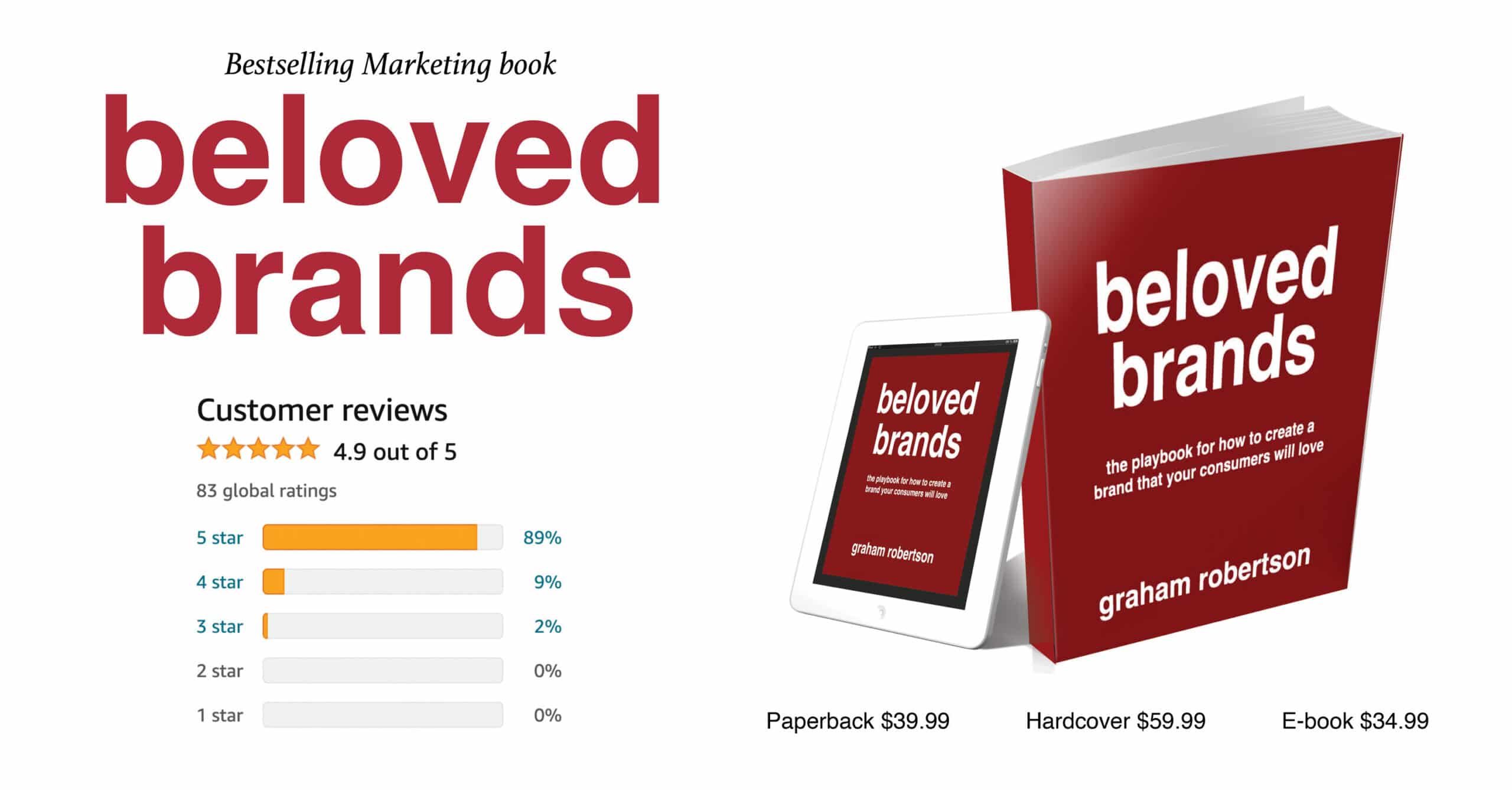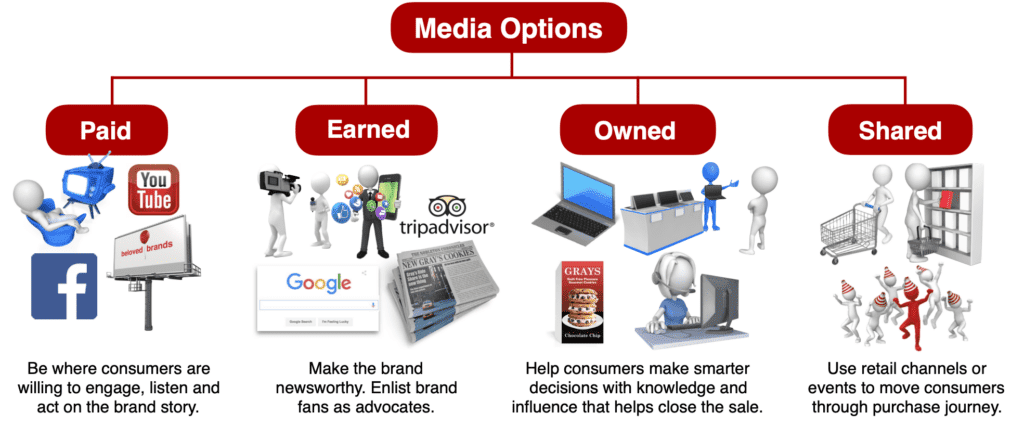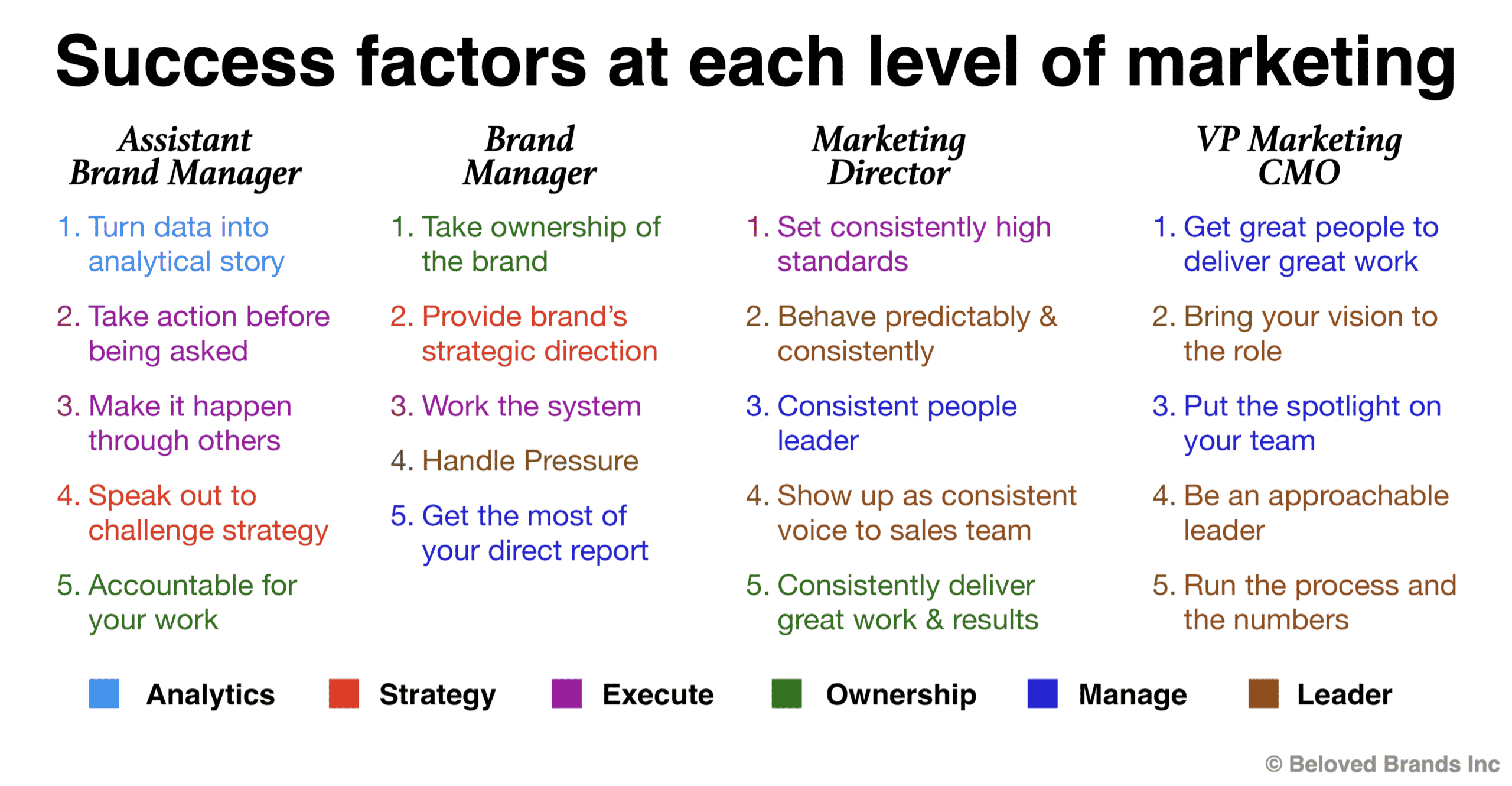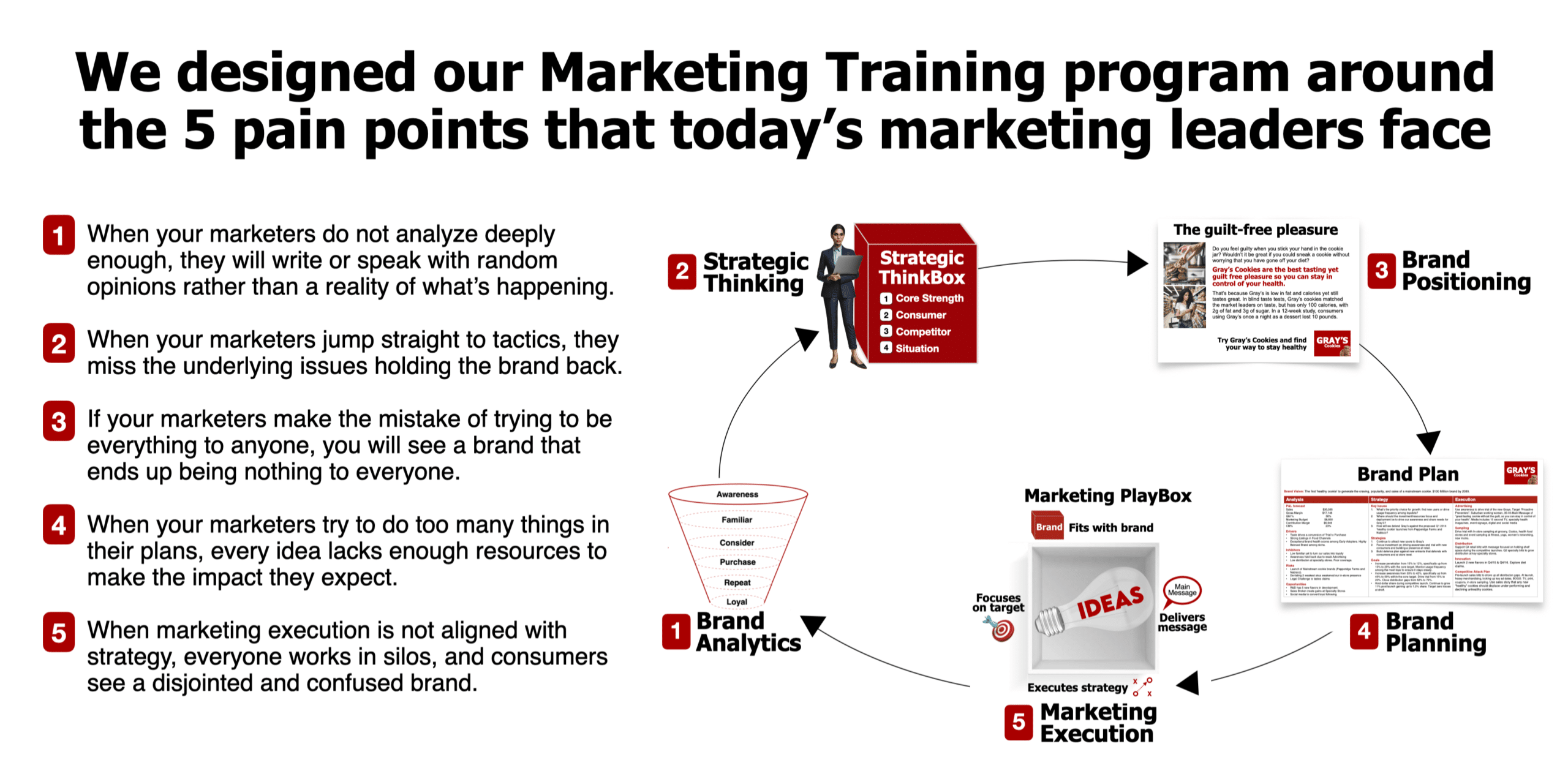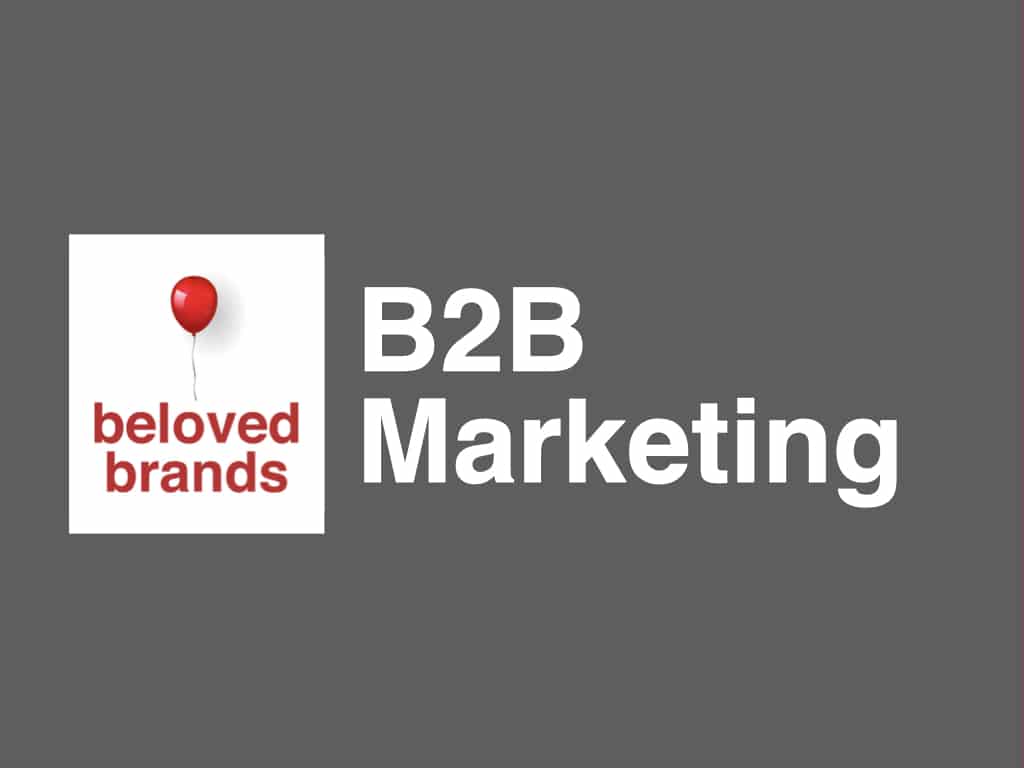On a daily basis, I hear marketing buzzwords bantered about and it becomes obvious people say them and don’t really even know what they mean. I think people use sacred marketing words like relevant, equity or insights because they figure no one will challenge them. Of course, everyone puts “strategic thinker” on their LinkedIn profile. The problem I see is that a generation of Brand Leaders have not been properly trained and it’s starting to show.
For the past 20 years, companies have said “on the job” training is good enough. But now the lack of training is starting to show up. The misuse of these marketing buzzwords can be linked to the lack of understanding of the fundamentals of marketing. Words always matter, but in marketing, the misuse of a word can send your brand on the wrong pathway.

The 10 most abused marketing buzzwords
Relevant
I once banned the marketing buzzword “relevant” because it was so abused. I found that when a marketer would say “we need to make sure it’s relevant,” the room would go silent.
Then there’s a pause, and someone would add their brilliance, “yeah, we have to be relevant.”
The room went quiet again.
So then I would usually ask a simple question, “so what do you mean relevant?” and sadly, that question seemed to stump most of my marketers.
Yes, of course, marketing should be relevant.
What exactly do YOU mean when YOU say the word relevant? When you answer the question, you likely just came up with something better. So use your specific answer of how you will be relevant instead of just blindly saying, “we need to be relevant.”
The overuse and vague definition of “relevant” can make it difficult for marketers to effectively communicate the value and benefits of their products and services. In addition, using the word “relevant” without clear context or definition can make it difficult for consumers to understand the actual value proposition of a brand.
2. Awareness
Just like the word relevant, you’re just forcing me to ask, “so when we get awareness, what do we get after we get awareness?” Once you spend money, you should be able to get awareness–it’s just a question of how much money you spend. In brand terms, we don’t make any money from awareness–we only begin to make money as we can move our consumer through the consideration-search-purchase stage. So, let’s save the word “awareness” for lazy brains.
3. Brand equity
There is a good chance you are using the term “brand equity” completely wrong. This marketing buzzword was first coined in the 1980s as part of the RJR Nabisco take-over when they couldn’t explain why they were willing to pay a higher price than the actual book value of the assets. They didn’t know how to explain it, so they called it “brand equity” and put a dollar figure to it.
The word has strayed since in two different directions: those like Brand Finance and Interbrand who still use it to correctly attribute it to the DOLLAR VALUE of the brand and those who misuse the word when they attribute to the HEALTH or CONNECTIVITY of the brand.
Where brand equity becomes an abused marketing buzzword is when it has become a catch-all statement for the “unexplainable” feelings about a brand.
Most get brand equity wrong.
People will say, “the final scene of the TV ad is emotional and should drive brand equity.” You might mean emotions. Just say, “create an emotional bond.”
Or even worse, “It’s an equity spot.” You might mean tangible brand assets (colors, logo, slogans). Just say, “utilize our brand assets.” Or you might say, “it’s a master brand spot.”
You should look at brand health and brand wealth separately. Brand equity is brand wealth with a dollar figure. There are eight ways to drive brand wealth: premium pricing, trading the consumer up or down, reducing both product costs and marketing costs, stealing other users or getting current users to use more, entering new categories, and creating new uses for your brand. Brand wealth is not unexplainable at all.
4. Target market
I’m in shock at how badly we define the target market in the creative brief. I once read a brief with a target that said “aged 18-65, new customers, current customers, and even employees.” That pretty much covers everyone but prisoners and tourists. A well-defined target should be a combination of demographics (age, income level, male/female) and psychographics (attitude, beliefs, and behaviors). I try to put an age demographic on every brief.
The media you buy, the talent you put in the ad, the stores you choose to sell to, or even the claims you make are likely going to have an age component, so you’re just kidding yourself by saying, “we are more about psychographics than demographics.” When it comes to age, I try to push for a maximum of a 5-year gap. This type of target doesn’t mean you won’t sell to people outside of this target, but it does help give focus to you.
5. Alienate
This word drives me bonkers, and it seems to be growing, or at least I keep hearing it. Your advertising, your new products, your customer experience should ALIENATE. You should alienate those who aren’t going to buy your product so it can focus on those who are already motivated to buy what you are selling.
The best brands have focus. And, the worst don’t.
The best marketing programs have focus, and the worst don’t.
If you want to be a great marketer, you must have focus–defined target, positioning, strategies, and execution. Stop being worried and cautious that you alienate older consumers or your current consumers, that you water down your marketing programs to the degree that we have no clue whom you’re talking to or what you’re even saying. As long as you are staying consistent and true to the brand, no one should be alienated by what you have to say and whom you tell.
6. Benefits
There’s an old selling expression: “features tell and benefits sell.” But I’m seeing that Marketers have become so obsessed with shouting their message as loud as they can, most brand communication is wall-to-wall claims about how great you are. Brand Leaders should be organizing their Customer Value Proposition into rational and emotional benefits. What I recommend you do is list out the brand features and put yourself in the shoes of your consumer and ask, “what do I get?” (for rational benefits) and “how does that make me feel?” (for the emotional benefits). Your brand’s communication should be a combination of the two.
7. Brief
Not really a marketing buzzword, but it is certainly an abused process. It is called a brief because it should be…BRIEF. I saw a creative brief last year that was eight pages long. Moreover, even that length, I couldn’t find one benefit or one consumer insight. Every brief should be one-page maximum. I’ve done a 1000 briefs at this point, and it is pretty easy to nail the one-page brief.
8. Brand
Too many companies have separate brand and product marketing teams, especially on the master-brand type companies. The “Brand” department handles PR, brand advertising, websites, and events. The “product” department handles new products, pricing, distribution, and product-oriented or promotion-oriented advertising. Brand and Product should NEVER be separated. It’s crazy.
My definition of a brand: “A brand is a unique idea, perceived in the minds and hearts of the consumer, consistently delivered by the experience, creating a bond, power, and profit, beyond what the product itself could achieve.”
To have a successful brand, you need to connect with consumers based on a BRAND IDEA and then line up the five connectors (promise, story, innovation, purchase moment, and experience). With two separate departments, who is making sure everything is aligned? The CMO? I would hope not. Force your brand and product to work as one. In terms of organizational structure, force them to bump into each other, debate and battle it out, and gain alignment, rather than operate in silos.
9. Strategic
To me, the difference between a strategic thinker and a non-strategic thinker is whether you see questions first or answers first. Strategic Thinkers see “what if” questions before they see solutions. They map out a range of decision trees that intersect and connect by imagining how events will play out. Strategic thinkers reflect and plan before they act. They are thinkers and planning who can see connections.
Non Strategic Thinkers see answers before questions. Strategic thinkers get to answers quickly and will get frustrated in the delays of thinking. They think doing something is better than doing nothing at all, and opt for action overthinking. They are impulsive and doers who see tasks. And, they are frustrated by strategic thinkers. However, to be a great marketer, you must be a bit of a chameleon. While pure strategy people make great consultants, I wouldn’t want them running my brand. They’d keep analyzing things to death, without ever taking action.
10. New media
New Media has been around 15-20 years old now. Maybe you don’t use the term “new media” but if you are saying “traditional media” then you are indirectly using the term. I bet you don’t call it “non traditional” do you? I’m not sure I hear the term “new media” on Mad Men when they talk TV ads, but that’s how crazy it sounds at this point.
In today’s cluttered media world, the brand idea should help organize all four types of media, including paid, earned, shared, and owned. Instead of misusing a marketing buzzword, try to use it right.
It is OK to use these marketing buzzwords. Just make sure you use them properly.
Marketing Careers
On a classic marketing team, there are four key levels:
- Assistant Brand Manager.
- Brand Manager.
- Marketing Director or Group Marketing Director.
- VP Marketing or CMO.
To illustrate, click to zoom in on the brand management career pathway.
At the Brand Manager level, it becomes about ownership and strategic thinking within your brand plan. Most Brand Managers are honestly a disaster with their first direct report, and get better around the fifth report.
When you get to the Marketing Director role, it becomes more about managing and leading than it does about thinking and doing. To be great, you need to motivate the greatness from your team and let your best players to do their absolute best.
And finally, at the CMO level, you must create your own vision, focus on your people to make them better and shine, drive the business results, and run the processes.
Our Beloved Brands Marketing Training program will make your team smarter.
If you are running a marketing team, you will always benefit from having a smarter team. When you invest in our marketing training program, you will help your team gain the marketing skills they need to succeed. As a result, you will see them make smarter decisions and produce exceptional work that drives business growth.
We’ll work with your team to help them learn more about the five core marketing skills: Strategic Thinking, Brand Positioning, Marketing Planning, Marketing Execution, and Brand Analytics. Most importantly, your marketers will learn new tools, concepts, and ideas to trigger new thinking. To help their skills, we get participants to take each tool on a test run. Then, we give feedback for them to keep improving.
For more information on our Beloved Brands Marketing Training programs, click below or email Graham Robertson at [email protected]
What type of marketer are you?
We believe that marketers learn best when they see our marketing concepts applied to brands that look like their own. We have come up with specific examples – consumer, B2B and healthcare – to showcase our marketing tools. Click on the icon below to choose your interest area.


